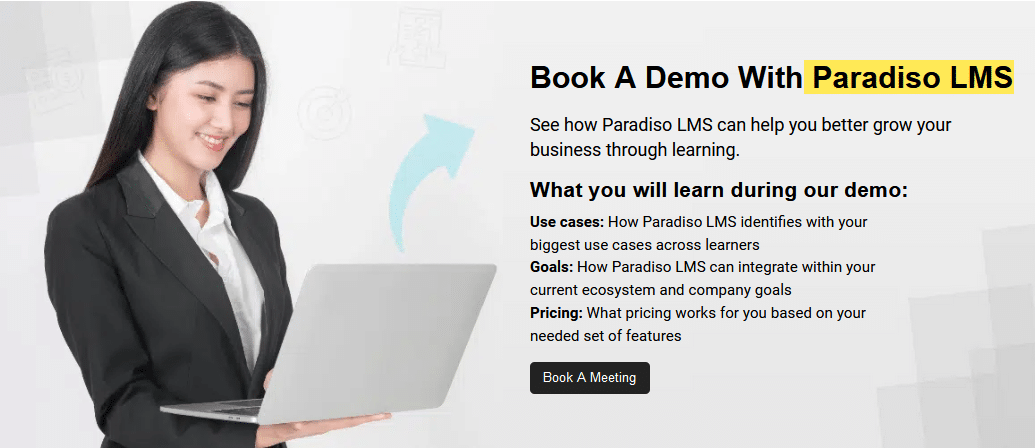Introduction to No-code LMS: Revolutionizing E-Learning Development
In today’s fast-paced digital education landscape, no-code Learning Management System (LMS) platforms are transforming how organizations design and deliver online courses. These innovative tools enable users to build, customize, and launch e-learning experiences without writing a single line of code. By simplifying the course creation process, no-code LMS platforms democratize education development, making it accessible for educators, trainers, and businesses alike—regardless of technical background.
Traditionally, developing a robust LMS or online courses required specialized programming skills or hiring developers, which created barriers for many organizations. No-code LMS solutions remove these obstacles by providing intuitive drag-and-drop interfaces, pre-designed templates, and straightforward customization options. This shift accelerates content development, reduces costs, and allows organizations to respond swiftly to evolving training needs.
Moreover, no-code platforms facilitate rapid course updates, seamless integration with other digital tools, and increased flexibility. As digital transformation accelerates across sectors, no-code LMS solutions are reshaping how educational content is created, managed, and delivered—empowering educators and trainers to innovate freely.
What is a No-code LMS? Key Features and Benefits
A no-code LMS is a versatile platform designed to empower users—such as educators, trainers, and administrators—without requiring programming skills. These systems revolutionize online learning delivery by offering simple, visual interfaces for course creation and management.
Core Functionalities of a No-Code LMS
- Easy Course Builder: Visual drag-and-drop tools to develop multimedia-rich modules, quizzes, and assignments without coding.
- Customizable Templates: Pre-designed themes and layouts that can be tailored to fit your branding and design preferences.
- Automation Features: Automated enrollment, progress tracking, and certification processes to streamline administration.
- Third-party Integrations: Compatibility with tools like Zoom, Google Workspace, and CRM systems for a seamless learning environment.
- Analytics & Reporting: Real-time data on learner engagement and performance to inform improvements.
Benefits of Using a No-Code LMS
- Speedy Deployment: Quickly create and publish courses to reach learners faster.
- Cost Reduction: Lower development costs by eliminating the need for technical staff.
- Enhanced Accessibility: Enable non-technical staff to manage and update content independently.
- Personalized Learning: Incorporate multimedia and interactive elements to cater to diverse learning styles.
- Scalability: Easily expand training programs across departments or locations.
Choosing a no-code LMS empowers organizations to democratize education development, foster innovation, and enhance learning efficiency—without technical barriers.
How No-Code Tools Empower Users to Build Personalized E-Learning Portals
No-code tools have democratized the creation of tailored, user-friendly e-learning portals, accessible to individuals regardless of technical expertise. This process involves a series of straightforward steps to turn a learning idea into a fully functional online platform.
Step 1: Define Learning Objectives
Start by clarifying your educational goals—like skill development or certification—and outline key features such as modules, assessments, forums, and multimedia components. Visual planning tools within no-code platforms help map the portal’s structure for clarity.
Step 2: Choose the Right Platform
Select a suitable no-code platform like Paradiso LMS, Thinkific, or Kajabi, considering features, scalability, and ease of use. Many platforms offer specialized templates designed specifically for educational portals, simplifying setup.
Step 3: Design the User Interface
Customize the visual look using drag-and-drop editors to upload logos, set color schemes, and arrange layout. Ensure navigation is intuitive, making it easy for learners of all backgrounds to access content.
Step 4: Upload Content
Add various media types—videos, PDFs, quizzes—via simple upload tools. Organize content logically within modules and lessons, making course progression smooth and engaging.
Step 5: Add Interactivity
Include quizzes, certificates, discussion forums, and self-assessment tools using built-in widgets. These interactive elements boost engagement and cater to diverse learning styles without any coding.
Step 6: Test and Refine
Preview your portal, gather user feedback, and fix any issues. Continuous testing ensures a seamless learner experience and highlights areas for improvement before official launch.
Step 7: Publish and Manage
Once ready, publish your portal with a few clicks. You can incorporate custom domains, track analytics, and update content easily, ensuring your e-learning environment remains relevant and effective.
No-code tools make building personalized e-learning portals accessible, efficient, and adaptable—perfect for organizations seeking quick and flexible training solutions.
Guide to Designing, Customizing, and Deploying Your Own LMS Using No-Code Solutions
Creating a tailored LMS without extensive coding knowledge is now more feasible than ever. No-code LMS solutions allow educators and organizations to efficiently develop, customize, and launch effective e-learning platforms, reducing both time and expense.
Understanding No-Code LMS Platforms
No-code platforms enable users to create applications like LMSs through visual, drag-and-drop interfaces rather than traditional programming. They offer templates, modules, and integrations, making it easy for non-technical users to build their learning environments.
Key Advantages
- Ease of Use: Intuitive interfaces simplify setup and ongoing management.
- Cost Savings: Lower development and maintenance costs compared to custom coding.
- Flexibility: Tailor the LMS to your branding, content, and learner journey without technical skills.
- Fast Deployment: Launch courses in a shorter time frame, enabling quick training delivery.
🚀 Ready to See Paradiso LMS in Action?
Let’s show you how Paradiso LMS can work for you.
Step-by-Step Instructions for Building Your LMS
1. Define Goals and Content Needs
Identify your training objectives, target audience, content formats, and desired features such as assessments, progress tracking, and gamification. Clear planning ensures alignment with your organizational goals.
2. Select a Suitable Platform
Evaluate options like Thinkific, LearnWorlds, or Moodle’s no-code features. Consider platform scalability, usability, integration options, and support to find the best fit for your needs.
3. Customize the Interface and Branding
Use drag-and-drop tools to upload your logo, select color schemes, and design layouts. Ensure intuitive navigation and a coherent look that reflects your organization’s identity.
4. Organize and Upload Content
Build your course structure with modules, lessons, and assessments. Upload multimedia files and categorize content to facilitate easy access and navigation.
5. Set Up Assessments and Certifications
Implement quizzes, assignments, and completion certificates to motivate learners and validate their achievement. Automate processes for streamlined certification issuance.
6. Configure Roles and Access Control
Create user roles like learner, instructor, or admin. Assign permissions to maintain a secure, well-organized learning environment.
7. Test and Refine
Conduct trials, gather feedback, and iterate. Ensuring usability and functionality leads to a polished, ready-to-launch LMS.
Best Practices for Deployment
- Consistency: Maintain branding and navigation uniformity.
- Usability: Design clear, simple interfaces to enhance engagement.
- Analytics: Use insights to improve content and learner experiences.
- Scalability & Security: Choose platforms supporting growth and data privacy.
- Support: Provide ongoing assistance and updates for platform sustainability.
Introduction to Paradiso LMS: Simplifying No-Code Learning Management Systems
Paradiso LMS is a powerful, flexible platform designed to simplify e-learning development through a no-code approach. It enables organizations and educators to easily create, deploy, and manage training programs without technical expertise. With its straightforward interface and robust features, Paradiso LMS makes personalized learning environments accessible to everyone.
Key Features of Paradiso LMS
- Drag-and-Drop Course Builder: Effortlessly develop courses, quizzes, and modules without coding.
- Wide Content Support: Support for videos, PDFs, SCORM, xAPI, and other formats for diverse learning needs.
- Integration Capabilities: Connects seamlessly with HR, CRM, and other enterprise systems.
- Advanced Reporting & Analytics: Gain insights into learner performance and engagement to optimize training.
- Mobile-Responsive Design: Ensure learners can access content anytime, anywhere.
- Gamification & Social Features: Incorporate badges, leaderboards, forums, and collaborative tools for increased engagement.
Use Cases & Success Stories
From corporate onboarding to higher education, Paradiso LMS serves a variety of sectors. For example, a retail giant reduced onboarding time by 40% using Paradiso, while an international university enhanced student participation with interactive content. Such successes highlight the platform’s versatility and effectiveness.
Ease of Use and Management
Paradiso LMS’s no-code framework allows HR professionals, educators, and administrators to craft and deploy courses swiftly, minimizing setup time and administrative effort. Its automation features streamline management, freeing resources to focus on content quality and learner engagement.
In sum, Paradiso LMS combines powerful functionalities with simplicity, transforming learning management into an accessible, efficient process suitable for organizations of any size.
Final Insights and Key Takeaways
Harnessing no-code LMS solutions is essential in today’s digital education climate. They enable rapid, flexible, and scalable online training development, fostering innovation while reducing dependency on technical skills. These platforms offer intuitive interfaces, multimedia integration, automation, and real-time analytics—helping organizations adapt swiftly to changing educational and corporate needs.
To get started, explore platforms such as Paradiso LMS that deliver comprehensive features and ease of use. Implementing a no-code LMS can significantly enhance your training programs, making them more engaging, manageable, and aligned with your strategic goals. Embrace this digital shift to stay competitive and foster continuous learning in your organization.

















